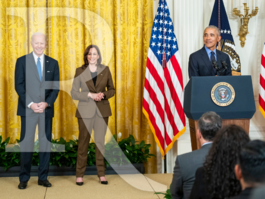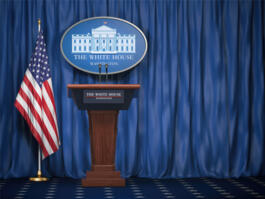Obama: The “Anti-Stimulant”
A Commentary By Howard Rich
Mere days after winning the presidency on the strength of his proposed “middle class tax cuts,” U.S. President Barack Obama switched gears and began outlining his vision for a massive “economic stimulus” – one that he promised would create three million jobs.
“We have to make sure that the stimulus is significant enough that it really gives a jolt to the economy,” President-elect Obama said in November 2008.
After spending two months preparing his plan, Obama’s economic forecasts for its success grew even rosier. In fact, according to a January 2009 report prepared by his top economic advisors, as many as four million jobs were to be created within two years.
“A package in the range that the President-Elect has discussed is expected to create between three and four million jobs by the end of 2010,” Christina Romer, Obama’s chief economic advisor, wrote in the report. “More than 90 percent of the jobs created are likely to be in the private sector.”
The price tag for these new jobs? “Only” $787 million.
Additionally, the “stimulus” was touted as an investment in American infrastructure, in the so-called “Green Jobs” of the future and in middle class taxpayers.
“The jobs we create will be in businesses large and small across a wide range of industries,” Obama proclaimed in a radio address just days before his inauguration. “And they’ll be the kind of jobs that don’t just put people to work in the short term, but position our economy to lead the world in the long-term.”
These were the numbers – and the spin – used to sell this monstrosity to the American public.
Of course that was just one side of the story. In the weeks leading up to the passage of the legislation, numerous warnings were sounded by limited government advocates as to the real cost, the true purpose and the inevitable failure of Obama’s plan. Aside from documenting the historic futility of government interventionism, critics pointed to a Congressional Budget Office analysis which showed that the actual cost of the stimulus was likely to exceed $2.5 trillion – not including $744 billion in debt servicing costs.
Also, from the moment the first draft of the spending plan was released, it was clear that the measure’s generous cash outlays were intended as nothing more than a bailout of an already bloated federal bureaucracy. Clearly Obama’s goal was not to stimulate the economy, but to safeguard government from the effects of its own unsustainable growth during the ongoing recession.
Specifically, Obama claimed that the measure was an “emergency economic recovery” proposal – yet only 11.3 percent of its appropriated spending was tapped within the first year. He also touted it as a “transportation and infrastructure” package – and yet just 17 percent of its discretionary funding was allocated for these purposes. Meanwhile it created thirty new government programs and dramatically-expanded another seventy programs.
This was a bureaucratic boondoggle, pure and simple; a massive government money grab that was destined to fail spectacularly – which it has.
Since the beginning of the recession, nearly 8 million private sector jobs have been lost. U.S. unemployment – which was never supposed to climb above 9 percent according to Obama’s economic advisors – has remained above 9.4 percent for seventeen consecutive months. Yet while the private sector has been reeling, the federal government has added nearly 200,000 positions – and that’s not counting temporary Census hires.
So what does Obama have to say now?
“The problem was we lost 4 million jobs before I was sworn in,” Obama said during an appearance on a popular comedy show just days before the 2010 elections. “Most of the jobs we lost were lost before the economic policies we put into place had any effect.”
A comedy show. How fitting.
Unfortunately, the joke of America’s failed “stimulus” isn’t on Obama or his predecessor – it’s on the millions of us who are ultimately going to be stuck paying the tab.
The author is chairman of Americans for Limited Government.
See Other Political Commentary .
See Other Commentary by Howard Rich .
Views expressed in this column are those of the author, not those of Rasmussen Reports.
Rasmussen Reports is a media company specializing in the collection, publication and distribution of public opinion information.
We conduct public opinion polls on a variety of topics to inform our audience on events in the news and other topics of interest. To ensure editorial control and independence, we pay for the polls ourselves and generate revenue through the sale of subscriptions, sponsorships, and advertising. Nightly polling on politics, business and lifestyle topics provides the content to update the Rasmussen Reports web site many times each day. If it's in the news, it's in our polls. Additionally, the data drives a daily update newsletter and various media outlets across the country.
Some information, including the Rasmussen Reports daily Presidential Tracking Poll and commentaries are available for free to the general public. Subscriptions are available for $4.95 a month or 34.95 a year that provide subscribers with exclusive access to more than 20 stories per week on upcoming elections, consumer confidence, and issues that affect us all. For those who are really into the numbers, Platinum Members can review demographic crosstabs and a full history of our data.
To learn more about our methodology, click here.



